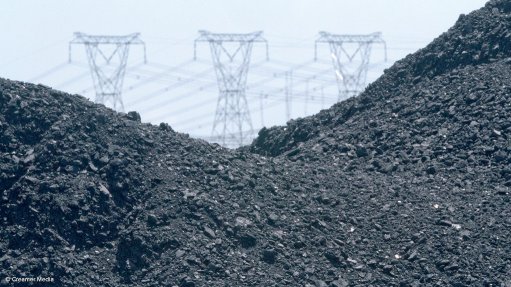‘Decolonising’ South Africa’s mining history
If there is one thing South African mining historians, myself included, have been guilty of, it is the tendency to focus on, and perpetuate, the ‘colonial-esque’ history of the industry.
The common history begins in the latter half of the nineteenth century, a time when white colonialists were cementing their rule over Southern Africa, with the narrative of the discovery of the first diamond by a young white farm boy in 1866 (or 1867) being the typical starting point. It then proceeds to glorify the mineral rushes and to explain how and why mining developed, how production expanded at a phenomenal rate and how a handful of men – mostly white immigrants – harnessed modes of production and capital to mould an entire industry to benefit their own commercial interests.
This pattern of narrative is similar across almost every commodity sector, beginning with the ‘discovery’ of the metal or mineral by a white explorer, prospector, geologist or digger, followed by a description of the rush, the formation of mining entities to exploit the commodity and the performance of those white-owned mining companies through boom-and-bust cycles and other relevant historical events.
It is hardly surprising that our narrative has been presented in such a way, given that the majority of South African mining histories were written in the pre-1994 nonracial democratic era by white men who, more often than not, were commissioned or, at least, partially funded by the mighty mining houses. Take, for example, AP Cartwright, who is considered one of the country’s greatest mining historians. He wrote prolifically on gold mining during the 1960s, publishing accounts on the history of Pilgrim’s Rest, Gold Fields of South Africa, the Corner House and the early mining magnates. His objective, he once stated, was to present mining and its influence on the economic history of the world as the fascinating subject it ought to be for all readers. He added that the “history of the great British companies that helped to found the Commonwealth provided magnificent material for the author”.
So, there can be no doubt that Cartwright’s narratives, while accurate and engaging, were slanted by a patriarchal and white imperialist outlook. This is not to say that the black man’s role in the development of the industry has been completely excluded from the narrative. No one could or can deny that the factor of labour has probably been the most important determinant in the feasibility of the industry for, without the exploitation of hundreds of thousands of black mineworkers, who were compelled to work for the bare minimum of wages, the mines would never have been able to operate and produce on the scale that was achieved in the last century.
While the role of labour, particularly black labour, has always been documented, and increasingly so in recent decades, that narrative was often written from an overly patriarchal and racist perspective. Black labour was presented as a single entity and in no instance was an element of individualism, inherent in the narratives relating to the mineral rushes and mining company narratives, provided.
This is to say nothing of the precolonial mining and metallurgical activities of indigenous communities. Despite the fact that there is a tradition of such activities dating back centuries, this aspect of our history has, for the most part, been totally disregarded or, at best, reduced to a mere few paragraphs in an opening chapter.
Viewed from this perspective, the nature of the published record on South Africa’s mining industry is certainly lamentable, and little can be said to justify the colonial and/or patriarchal slant that has dominated the narrative. Moreover, it does give some credence to the debate that this country’s history, or at least certain aspects of it, and the way it is conveyed and taught should be ‘decolonised’.
Having said that, historians of this country’s mining industry are at a distinct disadvantage when attempting to present a more holistic narrative. Many of the mining houses and companies that operated in the pre-1994 era are no longer in existence, having long since been unbundled or incorporated into new entities. And, while those company records, by law, should have been archived, much of that material has been disposed of. Thus, historians have to rely on company histories, published shareholder reports and newspaper reports, all of which would have been written from a particular slant. And, of that original company material that is still available, not much can be extracted from them, particularly from the perspective of black labour. In the early decades of the industry, little information was documented about the black men who were employed on the mines and, more often than not, their personal details consisted only of an employee number. And there are certainly instances where some of the personal records that were kept were disposed of to impede the compensation of certain workers.
But we cannot accept this reality as inevitable. The chroniclers of South Africa’s mining industry need to strive to construct a more balanced, objective and holistic history that not only incorporates the positive benefits of mining, particularly from the perspective of economic growth and facilitating the development of satellite industries, but also the harmful legacies. More, importantly, care needs to be taken to document the lives and experiences of white and black participants in the industry, be they labourers, mine managers or magnates.
To achieve this objective, it will be necessary to become more creative in the sources that are used. While company records, media statements and newspaper articles are still paramount, much more use must be made of archaeological investigations, prospecting notes, missionary reports, oral sources, environmental evaluations, sociological observations and medical examinations. It is particularly the oral accounts of those who worked in and for the mines, which is largely the realm of the sociologist, that should feature more prominently in our history.
It would be unwise to discount or even discredit the narrative that has already been conveyed because of its colonialist slant, for that, in itself, is illustrative of South African ideologies from a sociological perspective. What we can, and must, do going forward, however, is to ensure that the industry’s history is conveyed in a more inclusive manner.
Article Enquiry
Email Article
Save Article
Feedback
To advertise email advertising@creamermedia.co.za or click here
Comments
Press Office
Announcements
What's On
Subscribe to improve your user experience...
Option 1 (equivalent of R125 a month):
Receive a weekly copy of Creamer Media's Engineering News & Mining Weekly magazine
(print copy for those in South Africa and e-magazine for those outside of South Africa)
Receive daily email newsletters
Access to full search results
Access archive of magazine back copies
Access to Projects in Progress
Access to ONE Research Report of your choice in PDF format
Option 2 (equivalent of R375 a month):
All benefits from Option 1
PLUS
Access to Creamer Media's Research Channel Africa for ALL Research Reports, in PDF format, on various industrial and mining sectors
including Electricity; Water; Energy Transition; Hydrogen; Roads, Rail and Ports; Coal; Gold; Platinum; Battery Metals; etc.
Already a subscriber?
Forgotten your password?
Receive weekly copy of Creamer Media's Engineering News & Mining Weekly magazine (print copy for those in South Africa and e-magazine for those outside of South Africa)
➕
Recieve daily email newsletters
➕
Access to full search results
➕
Access archive of magazine back copies
➕
Access to Projects in Progress
➕
Access to ONE Research Report of your choice in PDF format
RESEARCH CHANNEL AFRICA
R4500 (equivalent of R375 a month)
SUBSCRIBEAll benefits from Option 1
➕
Access to Creamer Media's Research Channel Africa for ALL Research Reports on various industrial and mining sectors, in PDF format, including on:
Electricity
➕
Water
➕
Energy Transition
➕
Hydrogen
➕
Roads, Rail and Ports
➕
Coal
➕
Gold
➕
Platinum
➕
Battery Metals
➕
etc.
Receive all benefits from Option 1 or Option 2 delivered to numerous people at your company
➕
Multiple User names and Passwords for simultaneous log-ins
➕
Intranet integration access to all in your organisation


















